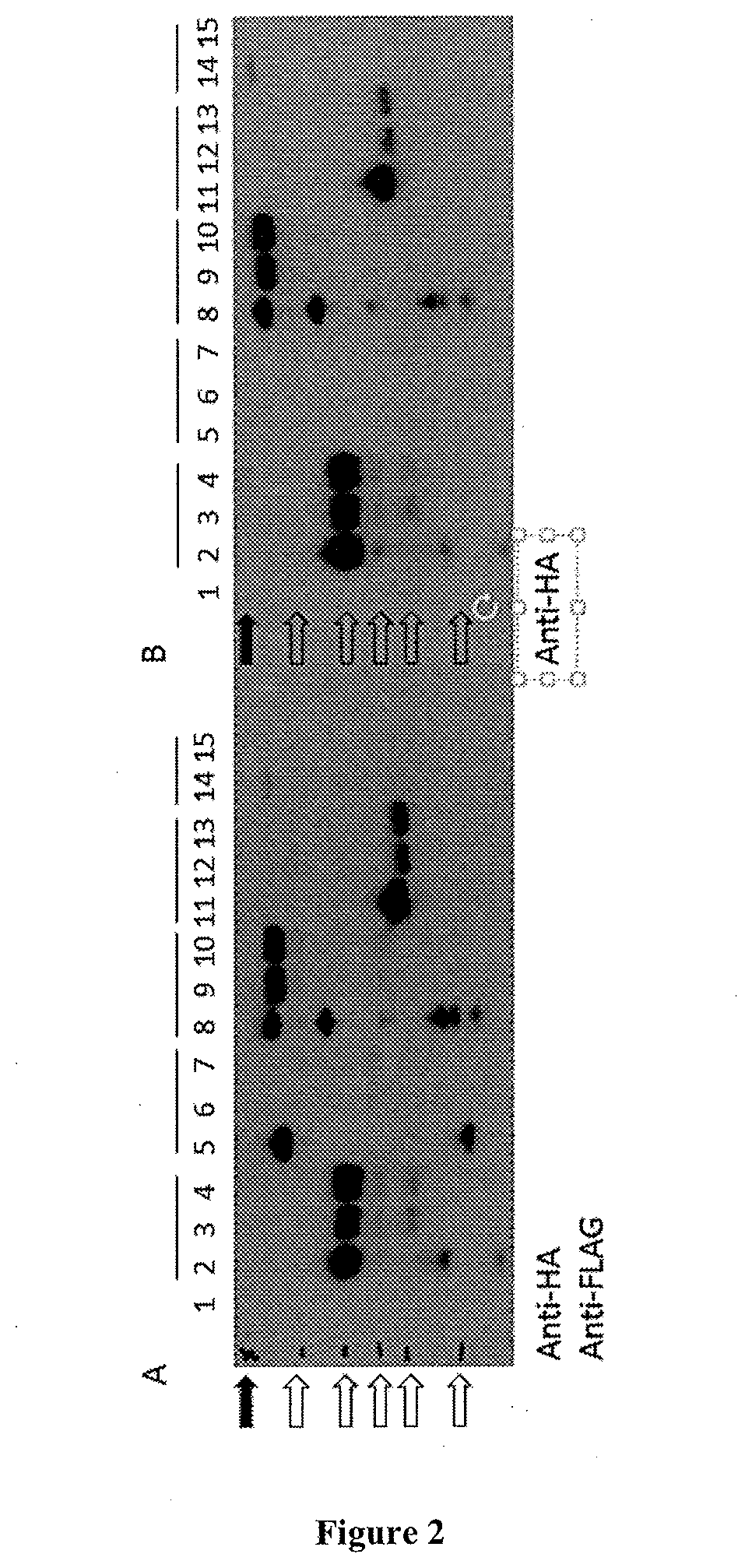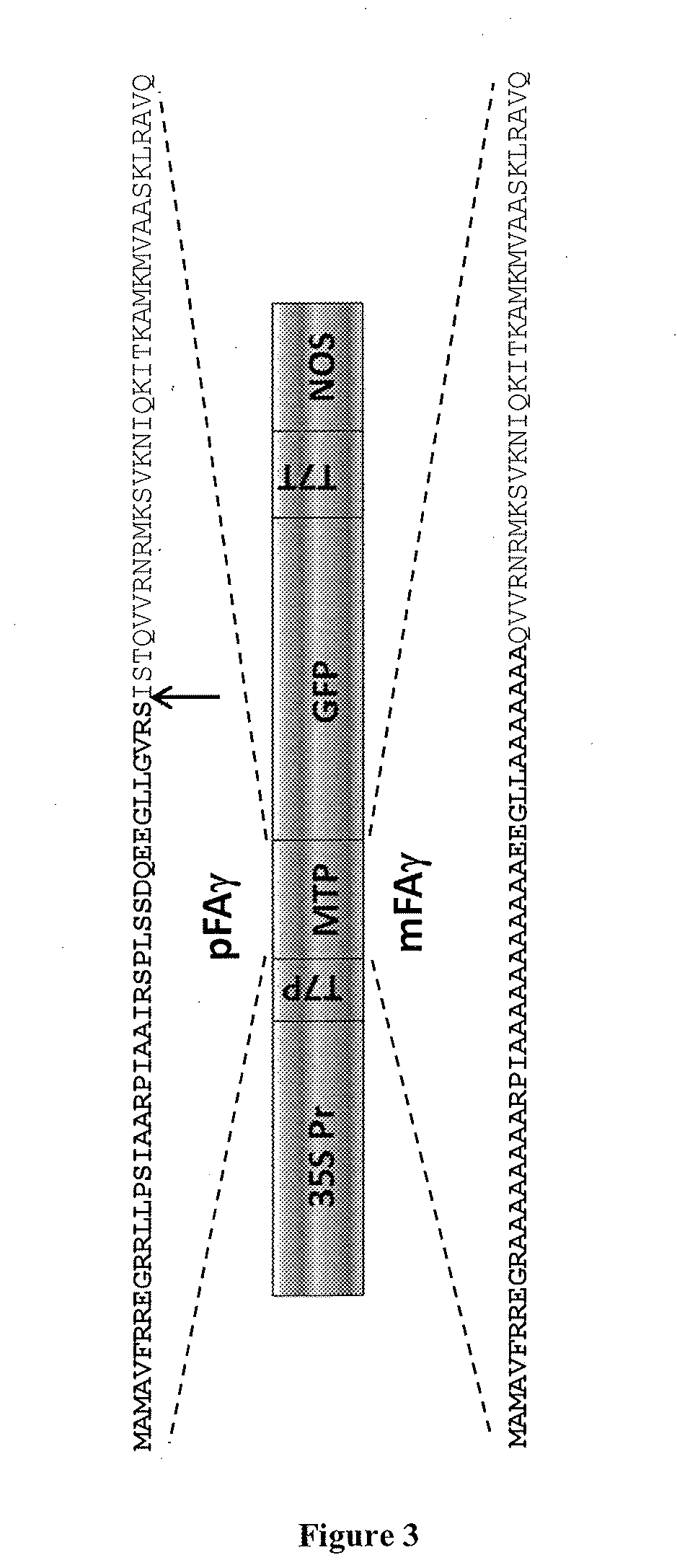Expression of nitrogenase polypeptides in plant cells
a technology of nitrogenase and polypeptides, which is applied in the field of expression of nitrogenase polypeptides in plant cells, can solve the problems of limiting crop yield, unsustainable, and pollution caused by fertiliser production and application, and achieves the effects of reducing nifd protein abundance, enhancing nifd abundance, and improving expression levels
- Summary
- Abstract
- Description
- Claims
- Application Information
AI Technical Summary
Benefits of technology
Problems solved by technology
Method used
Image
Examples
example 1
and Methods
Expression of Genes in Plant Cells in a Transient Expression System
[0532]Genes were expressed in plant cells using a transient expression system essentially as described by Wood et al., (2009). Binary vectors containing the coding region to be expressed in plant cells by a strong, constitutive 35S promoter were introduced into Agrobacterium tumefaciens strain AGL1 or GV3101. A chimeric binary vector, 35S:p19, for expression of the p19 viral silencing suppressor was separately introduced into AGL1, as described in WO2010 / 057246. The recombinant A. tumefaciens cells were grown to stationary phase at 28° C. in LB broth supplemented with 50 mg / L kanamycin and 50 mg / L rifampicin. The bacteria were then pelleted by centrifugation at 5000 g for 5 min at room temperature before being resuspended to OD600=1.0 in an infiltration buffer containing 10 mM MES pH 5.7, 10 mM MgCl2 and 100 μM acetosyringone. The cells were then incubated at 28° C. with shaking for 3 hr after which the OD...
example 2
MTP from a Yeast CoxIV Gene to Target Nif Polypeptides to Plant Mitochondria
[0542]To the best of the inventors' knowledge, there are no published reports of the production of bacterial nitrogenase (Nif) polypeptides in higher plants, including for example in plant mitochondria. To attempt such production in mitochondria, the inventors developed a plant-based, transient expression system in Nicotiana benthamiana leaves to determine if Nif polypeptides could be produced and detected in plant cells, and to test whether fusion polypeptides based on bacterial Nif polypeptides could be targeted to mitochondria in the plant cells by using mitochondrial targeting peptides (MTP). To test localisation to mitochondria, a MTP derived from the N-terminal region of a yeast cytochrome-c oxidase subunit IV (CoxIV) protein was selected. The CoxIV MTP had been shown to provide for mitochondrial localisation and processing of a fusion polypeptide with GFP in plant cells (Kohler et al., 1997). The CoxI...
example 3
ttempts to Detect Production of a NifD Fusion Polypeptide in Plant Cells
[0558]Given the lack of detection of the dCoxIV::NifD::FLAG fusion polypeptide as described in Example 2, the inventors hypothesised that this Nif fusion polypeptide might be sensitive to degradation, related perhaps to oxygen concentration, photosynthesis in the leaf cells or potentially mis-folding and therefore instability of the polypeptide, perhaps due to a lack of a putative chaperone protein (Ribbe and Burgess, 2001). To test these hypotheses, A. tumefaciens containing the vector pCW447 whose T-DNA encoded the pCoxIV::NifD::FLAG polypeptide was infiltrated into N. benthamiana leaves. The infiltrated plant tissues were excised and maintained on liquid culture medium for 24 hr under varied conditions. Combinations of each of these variations were also tested. The variations included maintaining the plant tissues at oxygen concentrations of 21% (ambient oxygen concentration), 5% or 1% in the dark or in the l...
PUM
| Property | Measurement | Unit |
|---|---|---|
| Volume | aaaaa | aaaaa |
| Fraction | aaaaa | aaaaa |
| Fraction | aaaaa | aaaaa |
Abstract
Description
Claims
Application Information
 Login to View More
Login to View More - R&D
- Intellectual Property
- Life Sciences
- Materials
- Tech Scout
- Unparalleled Data Quality
- Higher Quality Content
- 60% Fewer Hallucinations
Browse by: Latest US Patents, China's latest patents, Technical Efficacy Thesaurus, Application Domain, Technology Topic, Popular Technical Reports.
© 2025 PatSnap. All rights reserved.Legal|Privacy policy|Modern Slavery Act Transparency Statement|Sitemap|About US| Contact US: help@patsnap.com



